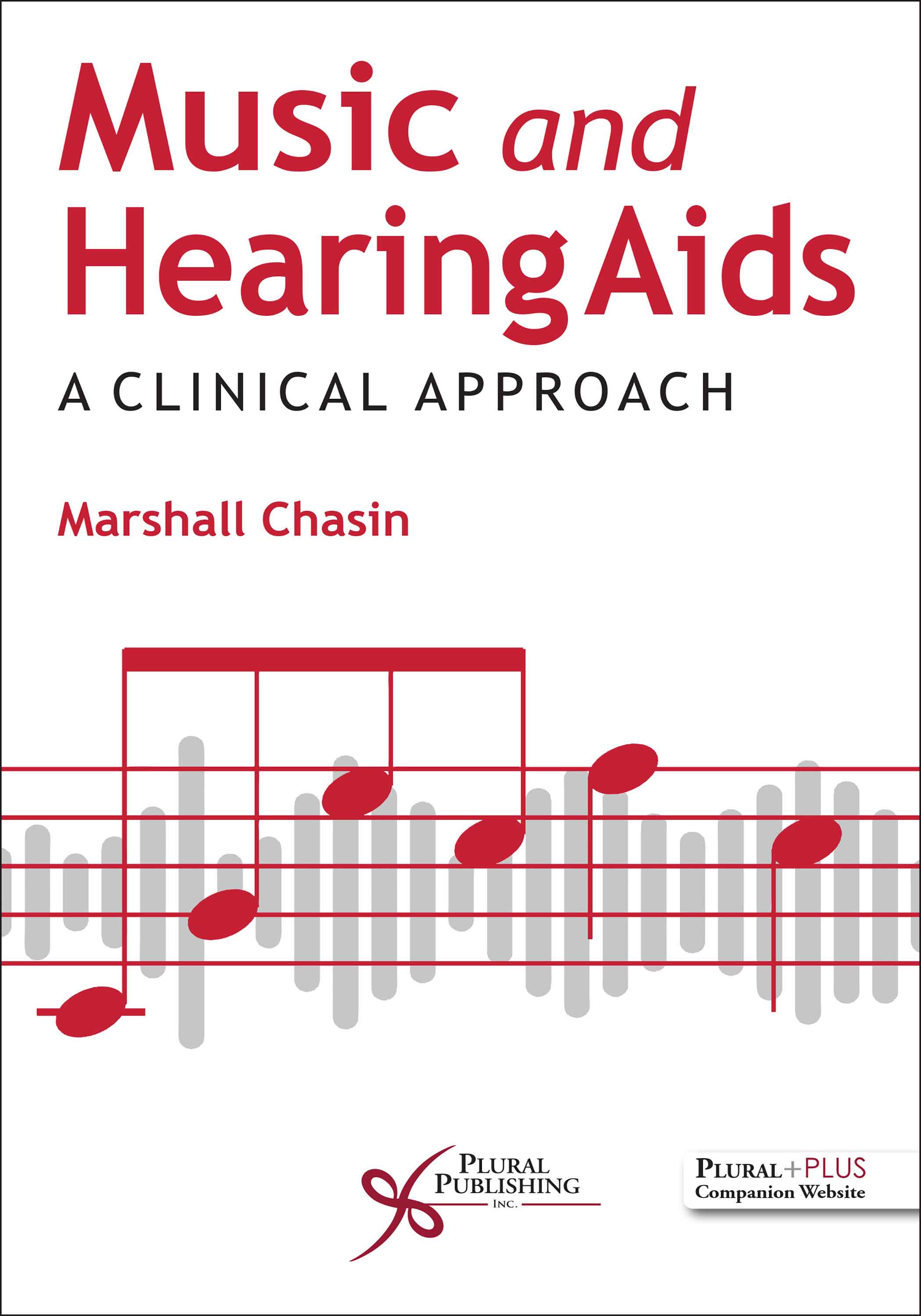
Music and Hearing Aids: A Clinical Approach
First Edition
Marshall Chasin
Details: 146 pages, B&W, Softcover, 6" x 9"
ISBN13: 978-1-63550-395-1
© 2022 | Available
Purchase
Earn CEUs for taking the AudiologyOnline.com course based on this book.
CEUs/Hours Offered: AAA/1.35 Advanced; ACAud/13.5; AHIP/13.5; BAA/13.5; CAA/13.5; Calif SLPAB/13.5; IACET/1.4; IHS/13.5; NZAS/3.0; SAC/13.5; TX TDLR/13.5 Non-manufacturer, TX-142-24-034
Music and Hearing Aids: A Clinical Approach is written for hearing health care professionals working with hard-of-hearing musicians and music lovers. This highly relevant book breaks down the research for how music can, and should, be processed through modern hearing aids and offers the busy audiologist clinically based strategies to optimize the sound of amplified music for hard-of-hearing people.
With an easy-to-read style, this text meets audiologists where they are by providing a primer on wavelength acoustics, as well as walking the reader through the basics of music needed to understand the research available. in addition, this professional resource highlights gaps in the research and technology, offering a clear picture of the room for growth available in the field.
Key Features
- A wide range of information covered in a concise text with 26 figures and 7 tables
- Statements throughout the book of where more work still needs to be done with 12 mini-experiments that could form the basis of student research projects
- A balanced discussion of clinical practice and research
- A chapter on "A return to older technology?” that includes input from many musicians who wear hearing aids
- A PluralPlus companion website with 15 audio files that serve to drive home the points presented in the text
From the Foreword by Dr. Mead C. Killion: “A major feature of this book is the extensive review of the literature. In each case, the relevance of the research findings to their implications for hearing aid design and fitting is emphasized ... A wealth of research is summarized with an eye to the clinical environment and fitting of hearing aids for listening to, and playing music.”
Reviews
“…Music and Hearing Aids (A Clinical Approach) adds to his long-running series dealing with the various aspects of music, musicians and hearing. This time around the work is directed primarily at audiologists looking to improve the experience of music for their clients, be they musicians or those who simply enjoy music.
Chasin covers the basics in the opening chapters, with a refresher on the acoustic properties of various instrument families and the primary dynamic and spectral differences between speech and music signals. Accompanied by easy-to-access online sound files, revised while clarifying a few questions along the way…
…these introductory chapters prepare the reader well for a more in-depth exploration of the limitations of hearing aids when dealing with both live and recorded music signals, and the impact of speech-specific tools such as dynamic range compression and frequency compression/lowering on musical signals. This is followed by a series of practical tips and tools that can be trialed by audiologists, and this is where Chasin is at his strongest, with decades of clinical experience on show.
Music and Hearing Aids concludes by stepping through a series of practical thoughts and ideas for technology developers to address some of the more critical failings of today’s hearing technology. The final words come in the form of requests by musicians with hearing aids – some of these echo requests heard in clinics across the world, while others give insight to more specific problems, such as allowing more detailed programming options for musicians or enabling connections with recording and music production software…I recommend this book for all audiologist and look forward to Chasin’s next installment.”
–Ian O’Brien, in Audiology Australia (June 2020)
“…The preface provides the perfect pep talk to the hopeful audiologists encountering clients who wish to listen to or play music whilst using amplifications – essentially, it’s a ‘you’ve got this guys’, but the pep talk isn’t empty words; it’s the warm-up exercises before the big show.
The text is concise; five chapters and three appendices provide the ensemble…Chapters one and two provide the background information; this is where that pep talk turns into understanding why music and musical instruments behave how they do and why we need to understand. It draws on what we already understand as audiologists: speech, acoustics, and dynamics. It’s these building blocks that allow musicians, musical appreciators, and audiologists to understand each other’s language. Chapter three draws together and critiques the known literature. Chapter four provides the clinical approach on a very practical level, with chapter five summarizing the future thoughts, whilst leaning on a more successful past. The text is accompanied by sound files to allow a multimedia approach to learning. Very generously, Marshall also provides 11 future research projects that would lend to our understanding – these are a gift for students looking for projects, or practicing audiologist with research time.
This book is very up to date ensuring it covers accessories, smartphones and PSAPs as part of the approach.
In summary, whist this is a very concise text, I would highly recommend to audiologists even if their contact with musicians is low. It will be rare to meet someone who doesn’t wish to enjoy music through their hearing aids on some level and this book will enable you to meet that challenge.”
–Gareth Smith, Consultant Clinical Scientist (Audiology), Mid and South Essex NHS Foundation Trust, UK in ENT & Audiology News (September/October 2022)
“Professor Marshall Chasin is clearly a passionate musician and audiologist. He brings this passion to his review on the clinical approach to music and hearing aids. He presents a comprehensive work that would benefit the audiologist or other clinician caring for patients with musical interest and hearing loss. The author excels in linking the physical world of acoustics and study of sound waves to the more subjective and clinical aspects of music and hearing loss. The text maintains a clinical relevance and can serve as a technical manual for the understanding of basic acoustics in music and how that relates to existing hearing aid technology.
The book is organized into five chapters that logically flow. The first section discusses the technical aspects of acoustics, including how musical instruments act as wavelength resonators. The second chapter returns to the clinical aspects of music that are important for the audiologist to understand. The third chapter is an outstanding section that reviews the current literature as it relates to music and hearing aids. This chapter is the highlight of the book, as it summarizes a vast body of literature while maintaining clinical relevance and clear focus. Whether discussing digital signal processing, compression and frequency response, or cochlear dead regions, the author is sure to return to the clinical relevance that makes this book useful in the practicing audiologist. The fourth chapter reviews details that are important to the audiologist who is fitting a patient with hearing aids. The final chapter reviews some older technology and highlights future research that the author would encourage to advance the understanding of music and hearing aids. While the text is likely beyond that scope of use for a clinically practicing otologist, audiologists would certainly benefit immensely from this text. In addition, any clinician with an interest in music and hearing loss would be well served by this book.
The production aspects of the book are excellent. The text is easy to read, and the citations are clear and easy to locate. In addition, there are icons in the margins indicating where further research is needed and where the reader can access audio files on the companion website. Professor Chasin presents a well-written text that is both technical and clinically relevant.”
–Jacob B. Kahane, MD, Louisiana State University Health Sciences Center, in Otology & Neurotology (December 2022)
Foreword by Mead Killion, PhD, DSc
Preface
Reviewers
Chapter 1. A Primer on Wavelength Acoustics for Musical Instruments
Chapter 2. Music (and Speech) for the Audiologist
Chapter 3. Hearing Aids and Music: What the Literature Says
Chapter 4. Clinical Approaches to Fitting Hearing Aids for Music
Chapter 5. A Return to Older Technology?
Appendix A. Conversion Chart of Musical Notes and Their Fundamental Frequencies
Appendix B. Research Projects That Would Contribute Significantly to Clinical Knowledge
Appendix C. 15 Audio File Descriptions
Index
Audio Files:
- Audio file of a French horn brass instrument playing notes either quietly (pp) or loudly (ff). The interested reader can perform their own spectral analysis of the sounds in the file.
- Audio file of a clarinet woodwind instrument playing notes either quietly (pp) or loudly (ff). The interested reader can perform their own spectral analysis of the sounds in the file.
- Audio file of a violin stringed instrument playing notes either quietly (pp) or loudly (ff). The interested reader can perform their own spectral analysis of the sounds in the file.
- The deleterious effects of decreasing the peak input limiting level from inputs of 115 dB SPL, to 105 dB SPL, to 95 dB SPL, and back to 115 dB SPL for music in an A-B-C-A format.
- The minimal effect of decreasing the peak input limiting level from inputs of 115 dB SPL, to 105 dB SPL, to 95 dB SPL, 90 dB SPL, and back to 115 dB SPL for speech in an A-B-C-D-A format.
- (A) Undistorted 1000 Hz pure tone and (B) a front end clipped pure tone creating a square wave with odd numbered multiples 1000 Hz, in an A-B-A format.
- In an A-B-A format, an orchestral piece of music has no frequency lowering (A) and linear frequency lowering (B) applied to it but by only ½ of one semitone above 1500 Hz.
- In an A-B-A format, speech has no frequency lowering (A) and linear frequency lowering (B) applied to it but by only ½ of one semitone above 1500 Hz.
- In an A-B-A format, music has (A) no modification to its spectrum and (B) a high frequency decrease of sound (-6dB/oct above 1500 Hz). This technique would be equally acceptable for both speech and for music.
- In an A-B-A format, (A) the original violin music, followed by the one octave linear frequency lowered music (B) creating a perfect fifth. A perfect fifth will always be created with one half wavelength resonator instruments such as the violin and will never be dissonant.
- In an A-B-A format, (A) the original clarinet music, followed by the one octave linear frequency lowered music (B) creating a third. A third will always be created with one quarter wavelength resonator instruments such as the clarinet and will never be dissonant.
- In an A-B-A format, (A) the original speech, followed by the one octave linear frequency lowered speech (B) which is almost unintelligible.
- In an A-B-A format, (A) flute, followed by (B) a “modified flute sound” where the higher frequency harmonics have been increased in amplitude, making it sound more like an oboe.
- Music is given in an A-B-C-D-A format, where A is a flat spectrum, and B, C, and D have peaks of 5 dB, 10 dB, and 15 dB respectively. There is one peak for each octave above 1000 Hz.
- Speech is given in an A-B-C-D-A format, where A is a flat spectrum, and B, C, and D have peaks of 5 dB, 10 dB, and 15 dB respectively. There is one peak for each octave above 1000 Hz.
Purchase of Music and Hearing Aids: A Clinical Approach comes with access to 15 audio files on a PluralPlus companion website.
To access the audio files, you must register the access code printed on the inside front cover of your book.
*Note: If you have purchased this book used or have rented it, your access code will not work if it was already redeemed by the original buyer of the book. Plural Publishing does not offer replacement access codes for used or rented books.
If you purchase the ebook, the audio files are included in the book.
LIST OF AUDIO FILES:
- Audio file of a French horn brass instrument playing notes either quietly (pp) or loudly (ff). The interested reader can perform their own spectral analysis of the sounds in the file.
- Audio file of a clarinet woodwind instrument playing notes either quietly (pp) or loudly (ff). The interested reader can perform their own spectral analysis of the sounds in the file.
- Audio file of a violin stringed instrument playing notes either quietly (pp) or loudly (ff). The interested reader can perform their own spectral analysis of the sounds in the file.
- The deleterious effects of decreasing the peak input limiting level from inputs of 115 dB SPL, to 105 dB SPL, to 95 dB SPL, and back to 115 dB SPL for music in an A-B-C-A format.
- The minimal effect of decreasing the peak input limiting level from inputs of 115 dB SPL, to 105 dB SPL, to 95 dB SPL, 90 dB SPL, and back to 115 dB SPL for speech in an A-B-C-D-A format.
- (A) Undistorted 1000 Hz pure tone and (B) a front end clipped pure tone creating a square wave with odd numbered multiples 1000 Hz, in an A-B-A format.
- In an A-B-A format, an orchestral piece of music has no frequency lowering (A) and linear frequency lowering (B) applied to it but by only ½ of one semitone above 1500 Hz.
- In an A-B-A format, speech has no frequency lowering (A) and linear frequency lowering (B) applied to it but by only ½ of one semitone above 1500 Hz.
- In an A-B-A format, music has (A) no modification to its spectrum and (B) a high frequency decrease of sound (-6dB/oct above 1500 Hz). This technique would be equally acceptable for both speech and for music.
- In an A-B-A format, (A) the original violin music, followed by the one octave linear frequency lowered music (B) creating a perfect fifth. A perfect fifth will always be created with one half wavelength resonator instruments such as the violin and will never be dissonant.
- In an A-B-A format, (A) the original clarinet music, followed by the one octave linear frequency lowered music (B) creating a third. A third will always be created with one quarter wavelength resonator instruments such as the clarinet and will never be dissonant.
- In an A-B-A format, (A) the original speech, followed by the one octave linear frequency lowered speech (B) which is almost unintelligible.
- In an A-B-A format, (A) flute, followed by (B) a “modified flute sound” where the higher frequency harmonics have been increased in amplitude, making it sound more like an oboe.
- Music is given in an A-B-C-D-A format, where A is a flat spectrum, and B, C, and D have peaks of 5 dB, 10 dB, and 15 dB respectively. There is one peak for each octave above 1000 Hz.
- Speech is given in an A-B-C-D-A format, where A is a flat spectrum, and B, C, and D have peaks of 5 dB, 10 dB, and 15 dB respectively. There is one peak for each octave above 1000 Hz.
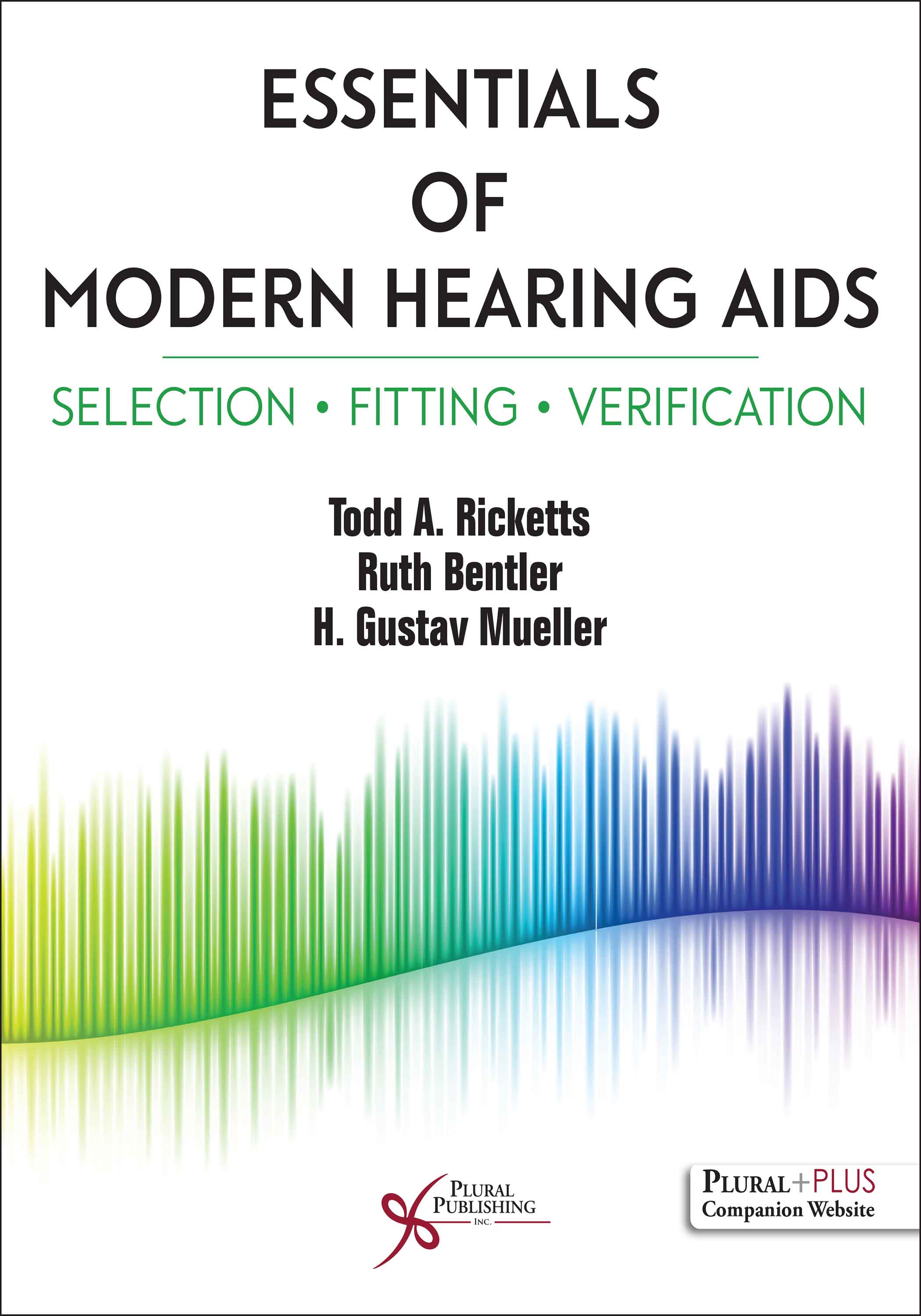
Essentials of Modern Hearing Aids: Selection, Fitting, and Verification
First Edition
Todd A. Ricketts, Ruth Bentler, H. Gustav Mueller
Details: 888 pages, B&W, Hardcover, 8.5" x 11"
ISBN13: 978-1-59756-853-1
© 2019 | Available
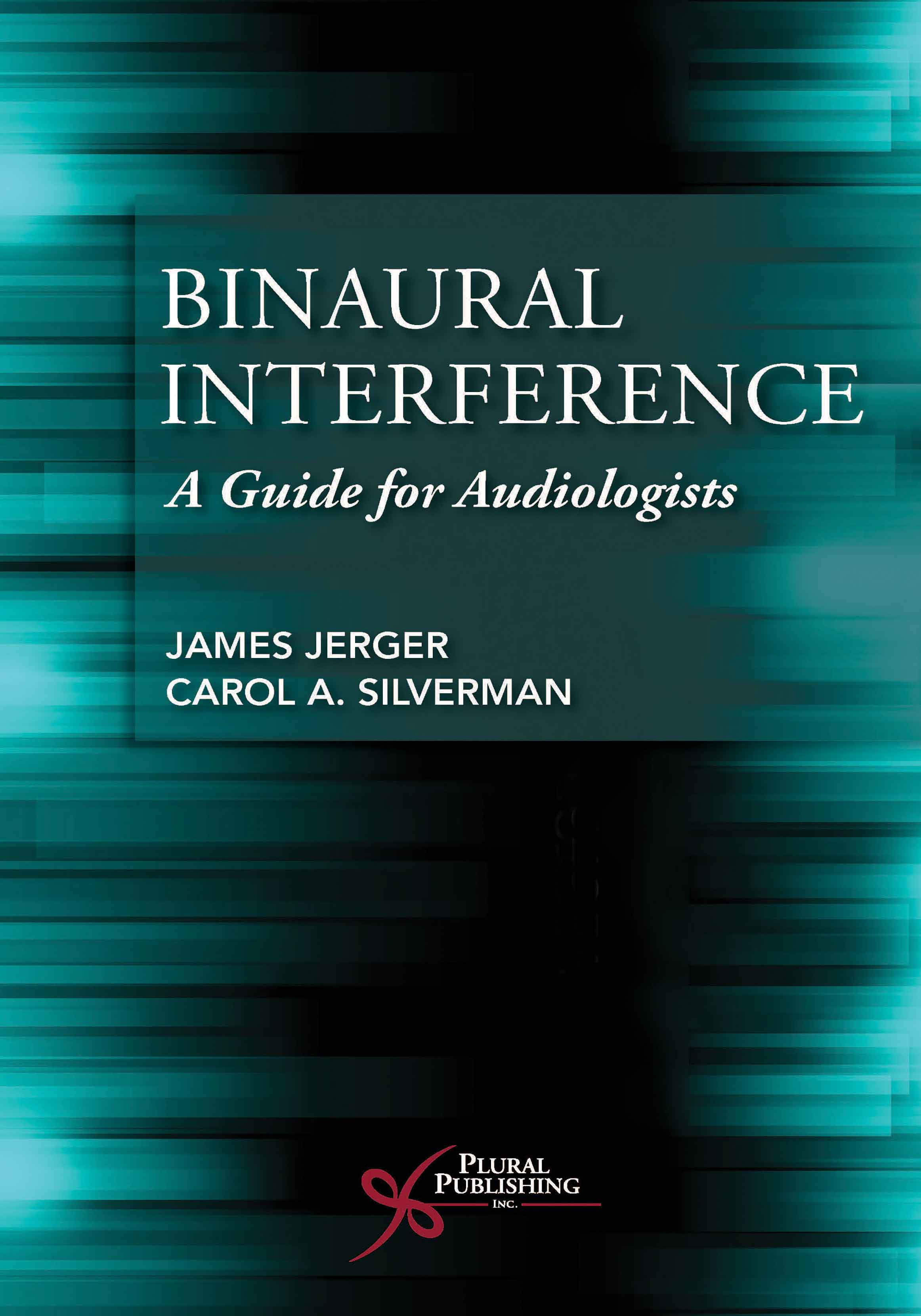
Binaural Interference: A Guide for Audiologists
First Edition
James Jerger, Carol A. Silverman
Details: 124 pages, B&W, Softcover, 6" x 9"
ISBN13: 978-1-63550-076-9
© 2018 | Available
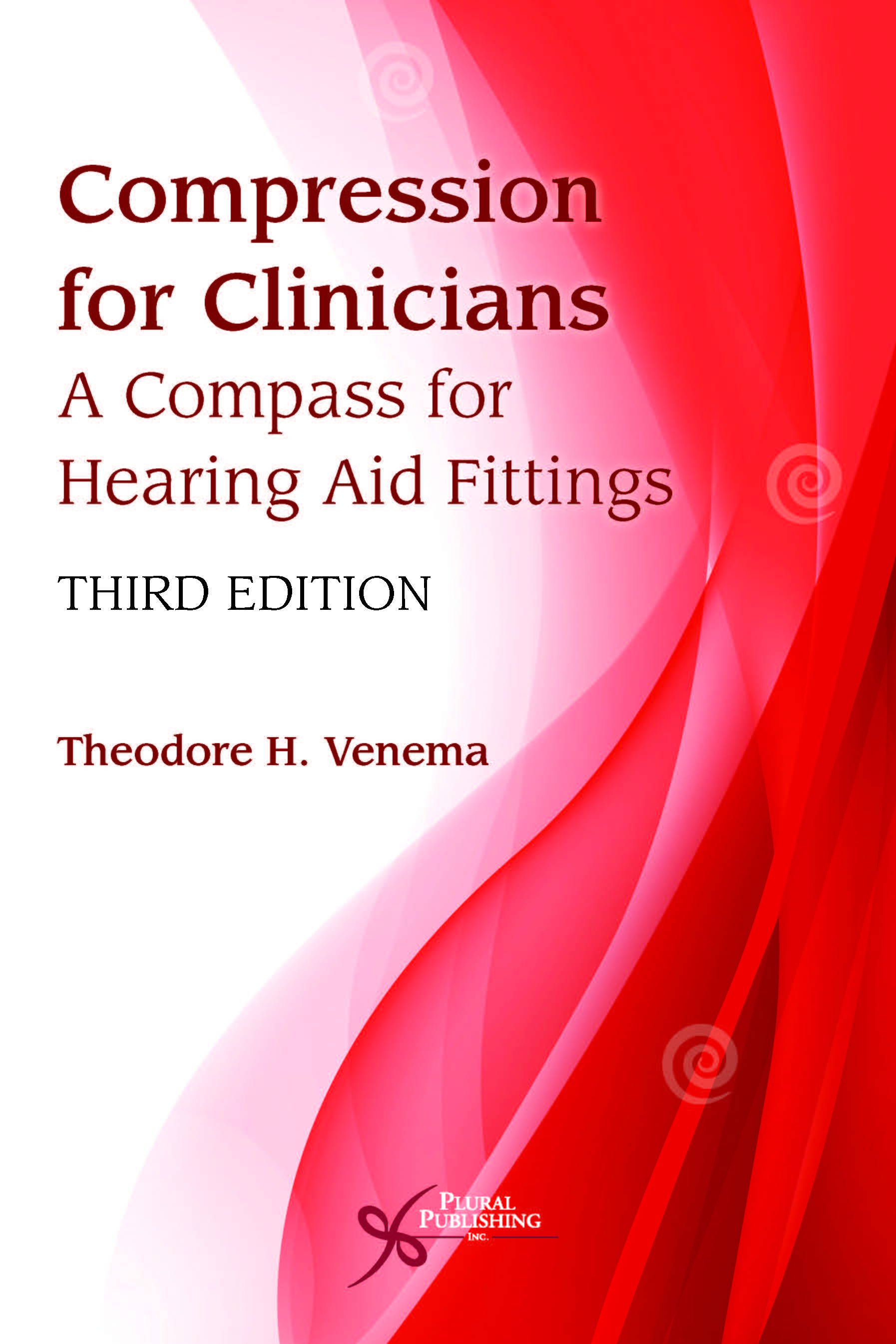
Compression for Clinicians: A Compass for Hearing Aid Fittings
Third Edition
Theodore H. Venema
Details: 416 pages, B&W, Softcover, 6" x 9"
ISBN13: 978-1-59756-987-3
© 2017 | Available
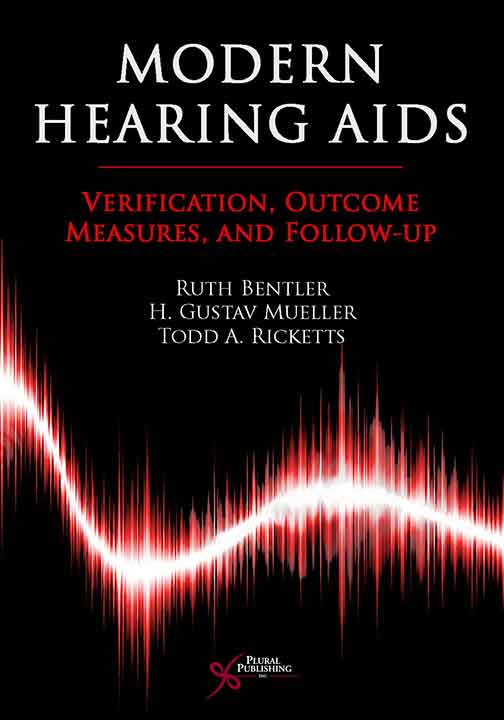
Modern Hearing Aids: Verification, Outcome Measures, and Follow-Up
First Edition
Ruth Bentler, H. Gustav Mueller, Todd A. Ricketts
Details: 748 pages, B&W, Hardcover, 8.5" x 11"
ISBN13: 978-1-59756-482-3
© 2016 | Available
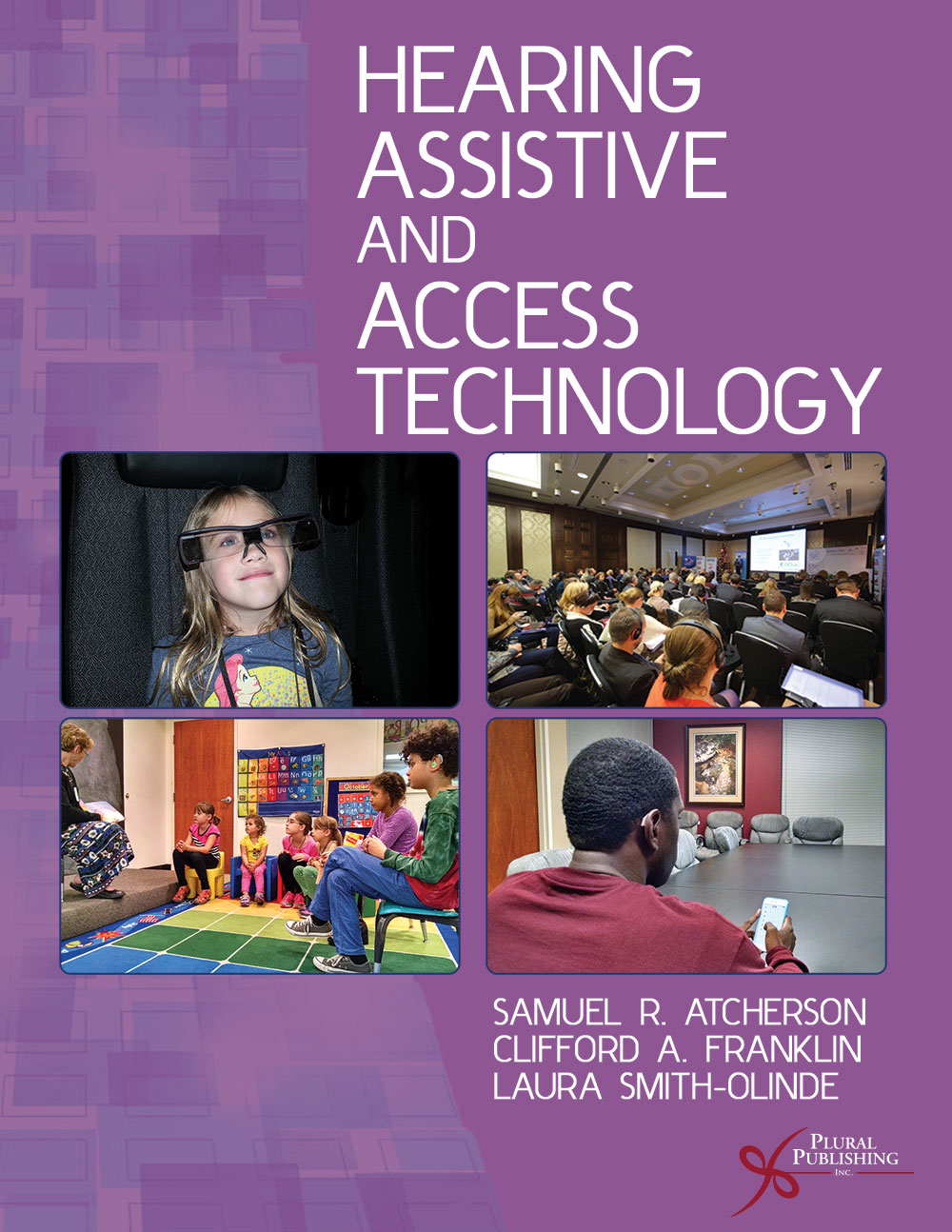
Hearing Assistive and Access Technology
First Edition
Samuel R. Atcherson, Clifford A. Franklin, Laura Smith-Olinde
Details: 320 pages, B&W, Softcover, 7" x 10"
ISBN13: 978-1-59756-512-7
© 2015 | Available
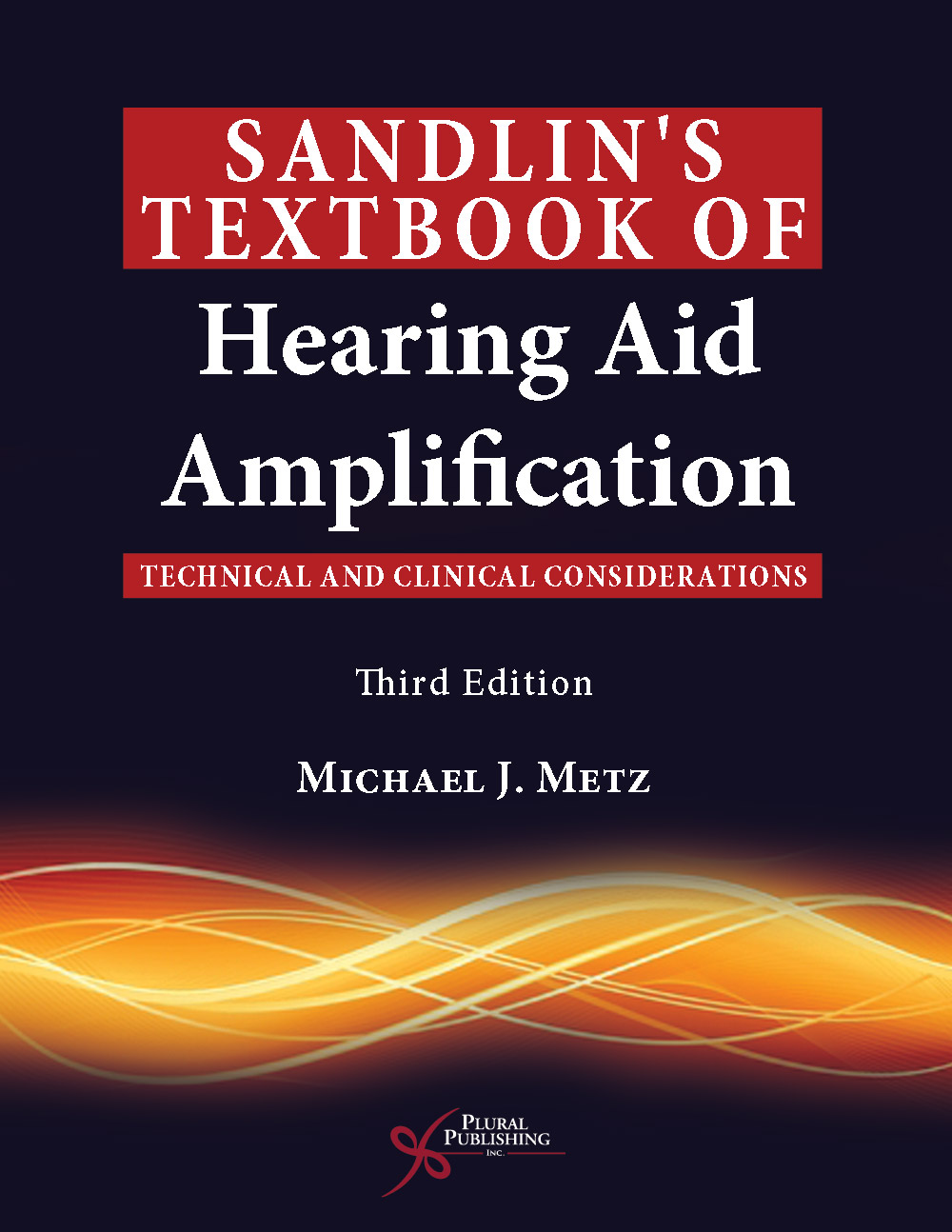
Sandlin's Textbook of Hearing Aid Amplification: Technical and Clinical Considerations
Third Edition
Michael J. Metz
Details: 776 pages, B&W, Softcover, 7" x 10"
ISBN13: 978-1-59756-563-9
© 2014 | Available
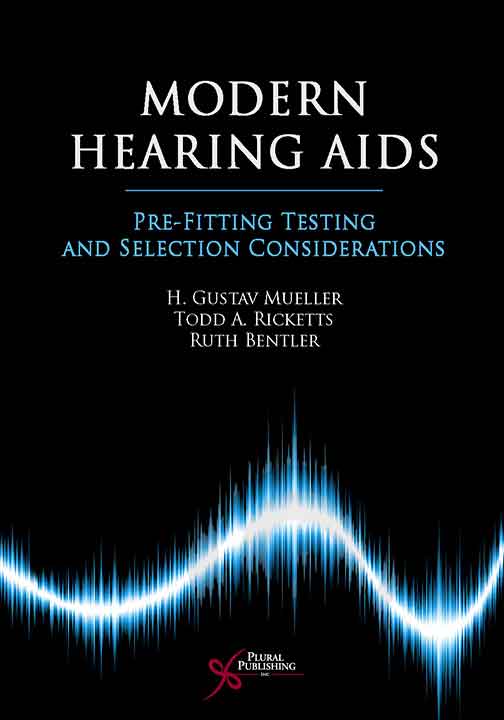
Modern Hearing Aids: Pre-Fitting Testing and Selection Considerations
First Edition
H. Gustav Mueller, Todd A. Ricketts, Ruth Bentler
Details: 472 pages, B&W, Hardcover, 8.5" x 11"
ISBN13: 978-1-59756-138-9
© 2014 | Available
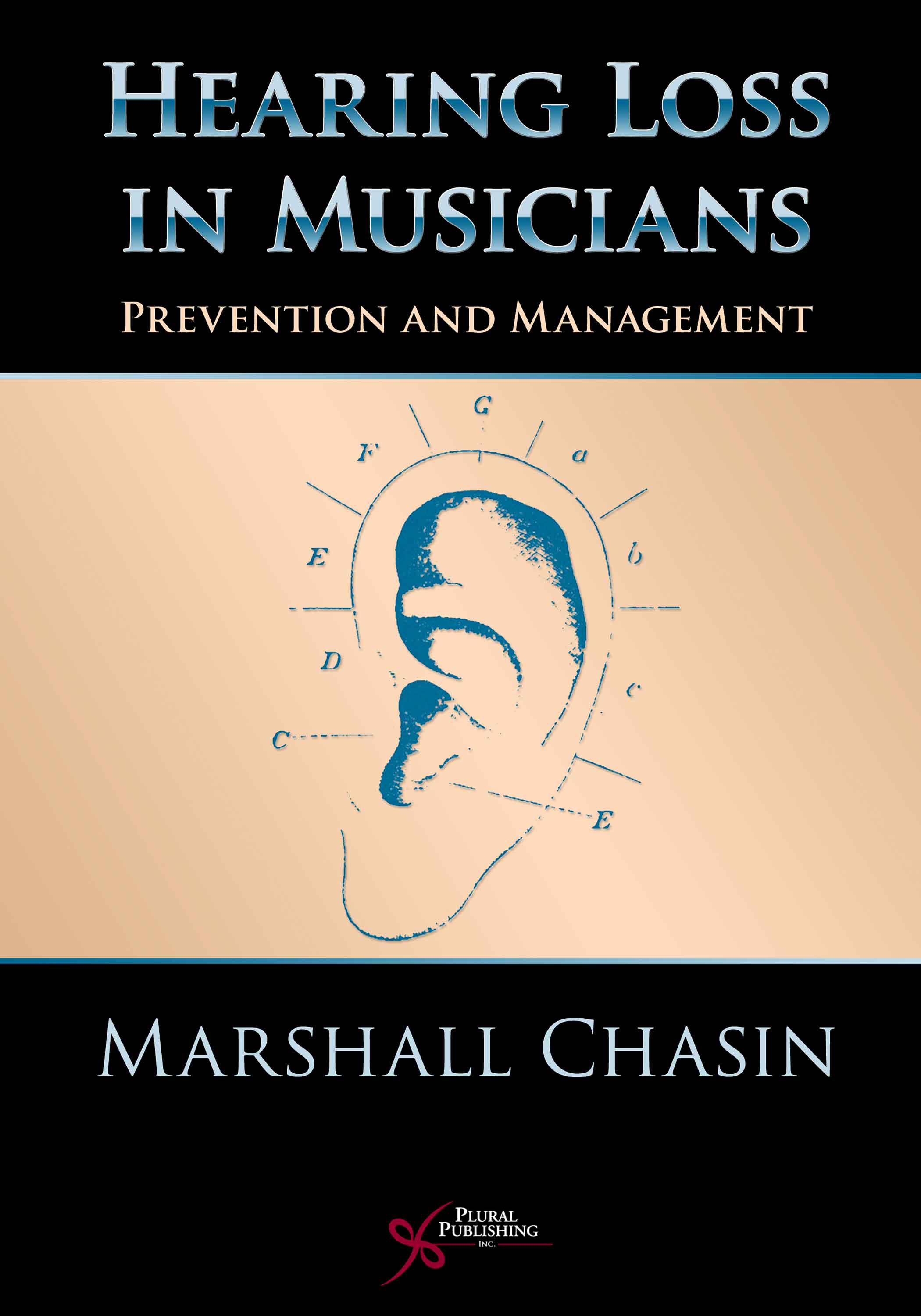
Hearing Loss in Musicians: Prevention and Management
First Edition
Marshall Chasin
Details: 186 pages, B&W, eBook
ISBN13: 978-1-63550-396-8
© 2009 | Available
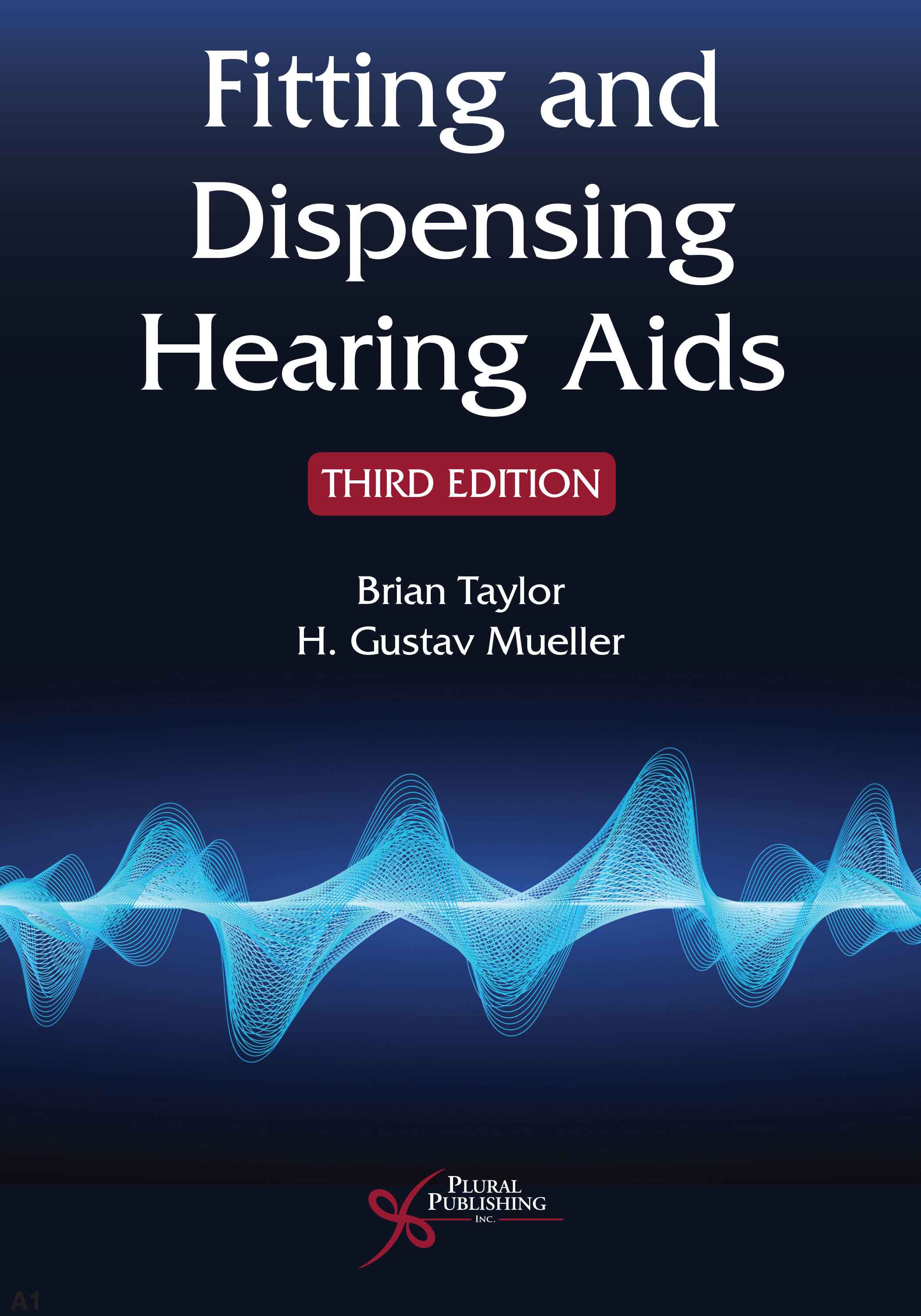
Fitting and Dispensing Hearing Aids
Third Edition
Brian Taylor, H. Gustav Mueller
Details: 550 pages, B&W, Softcover, 7" x 10"
ISBN13: 978-1-63550-210-7
© 2021 | Available

